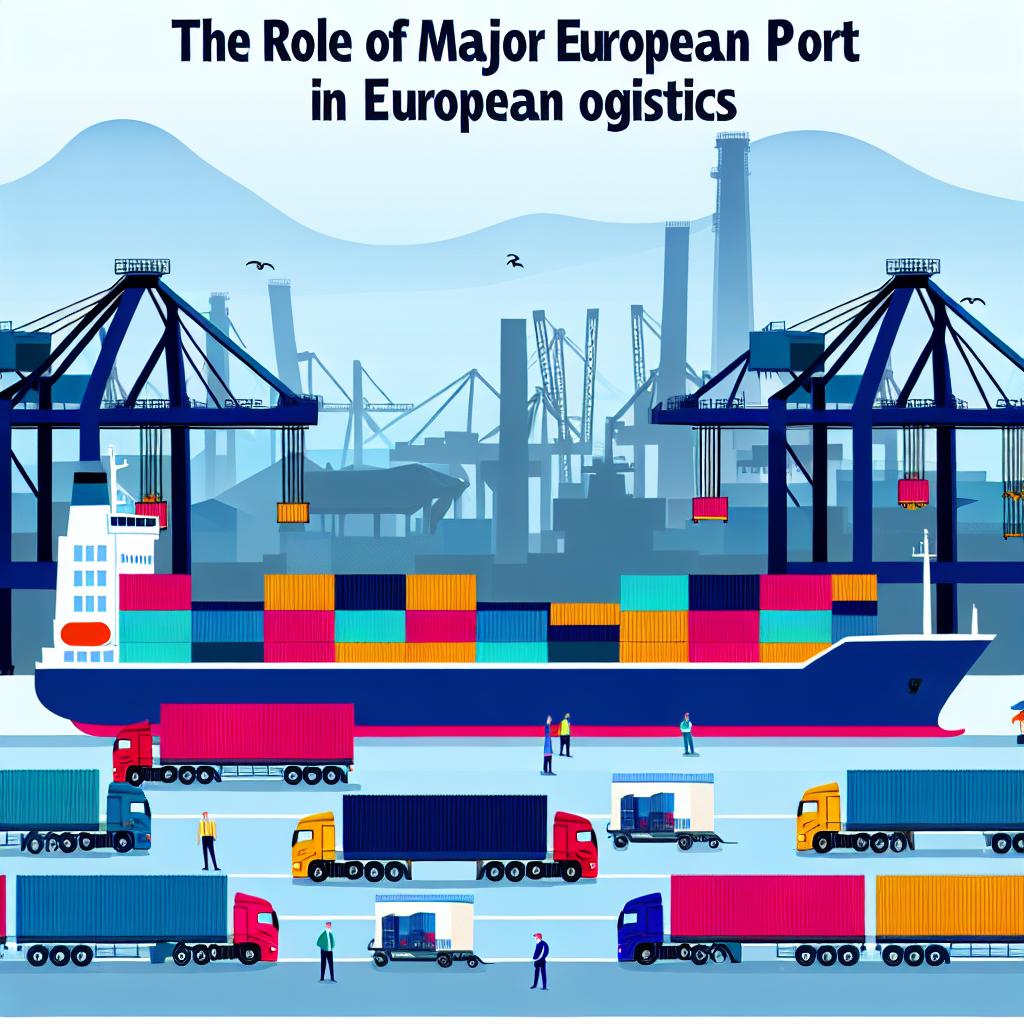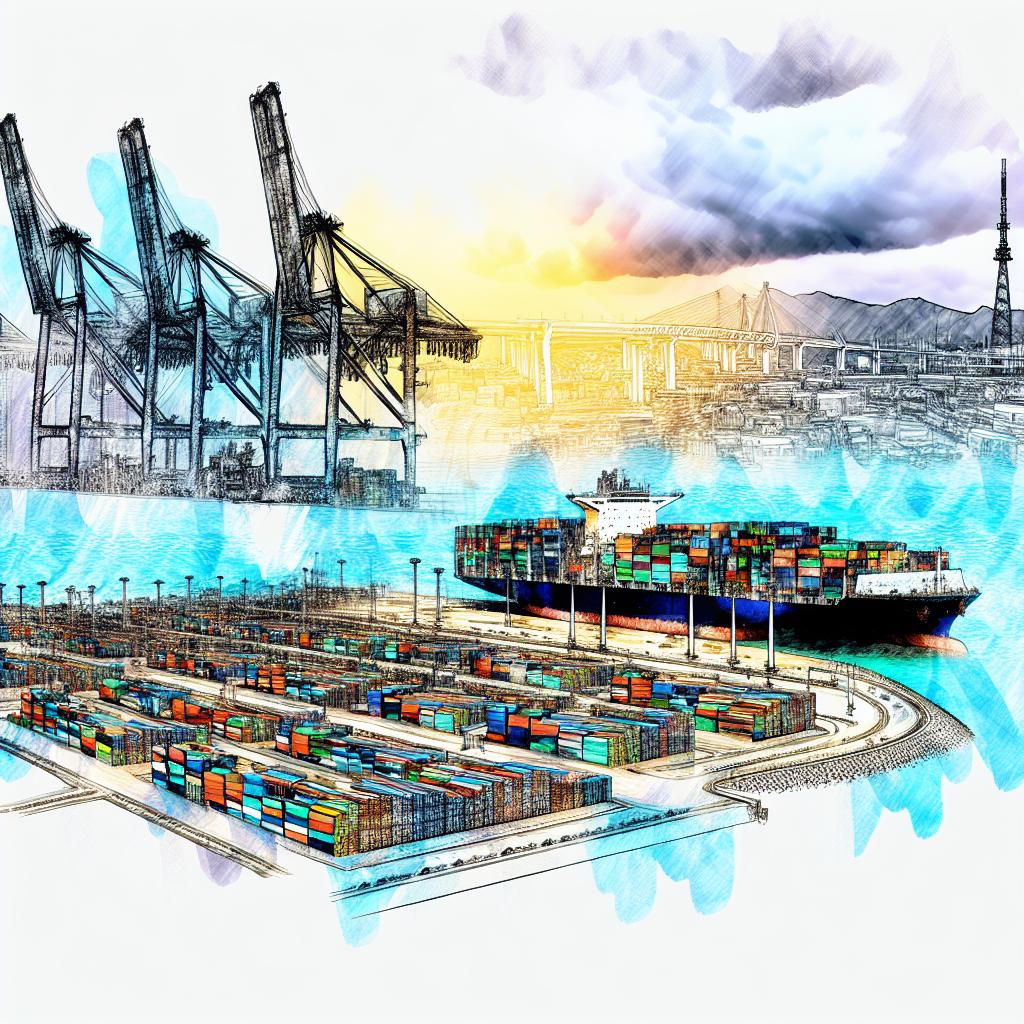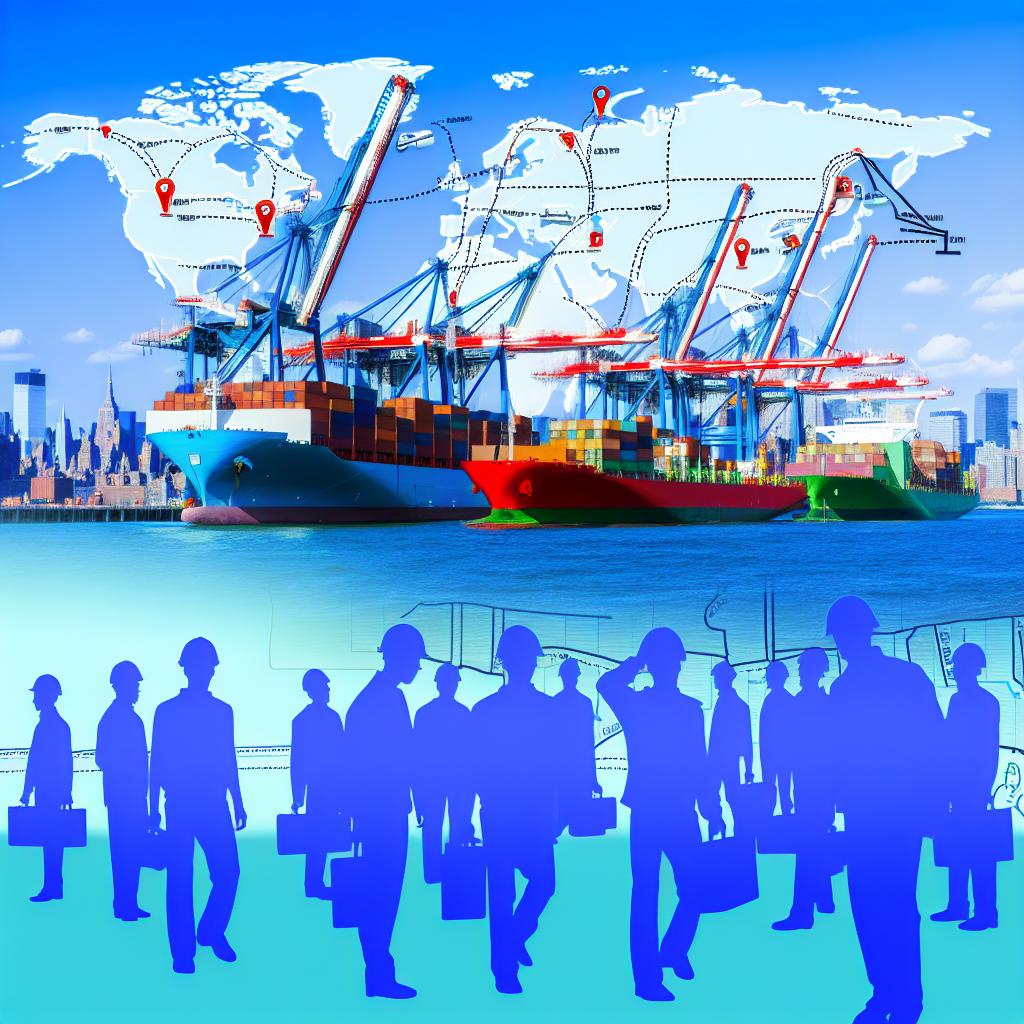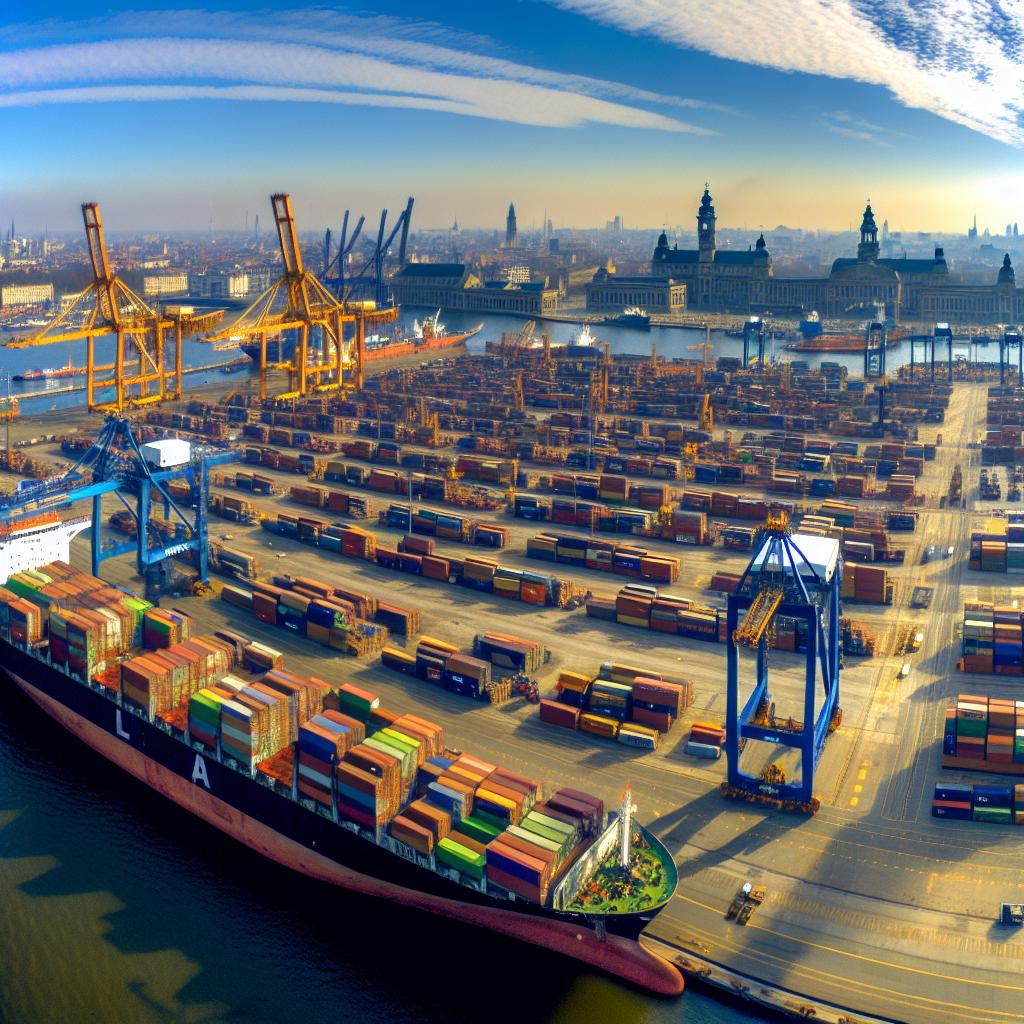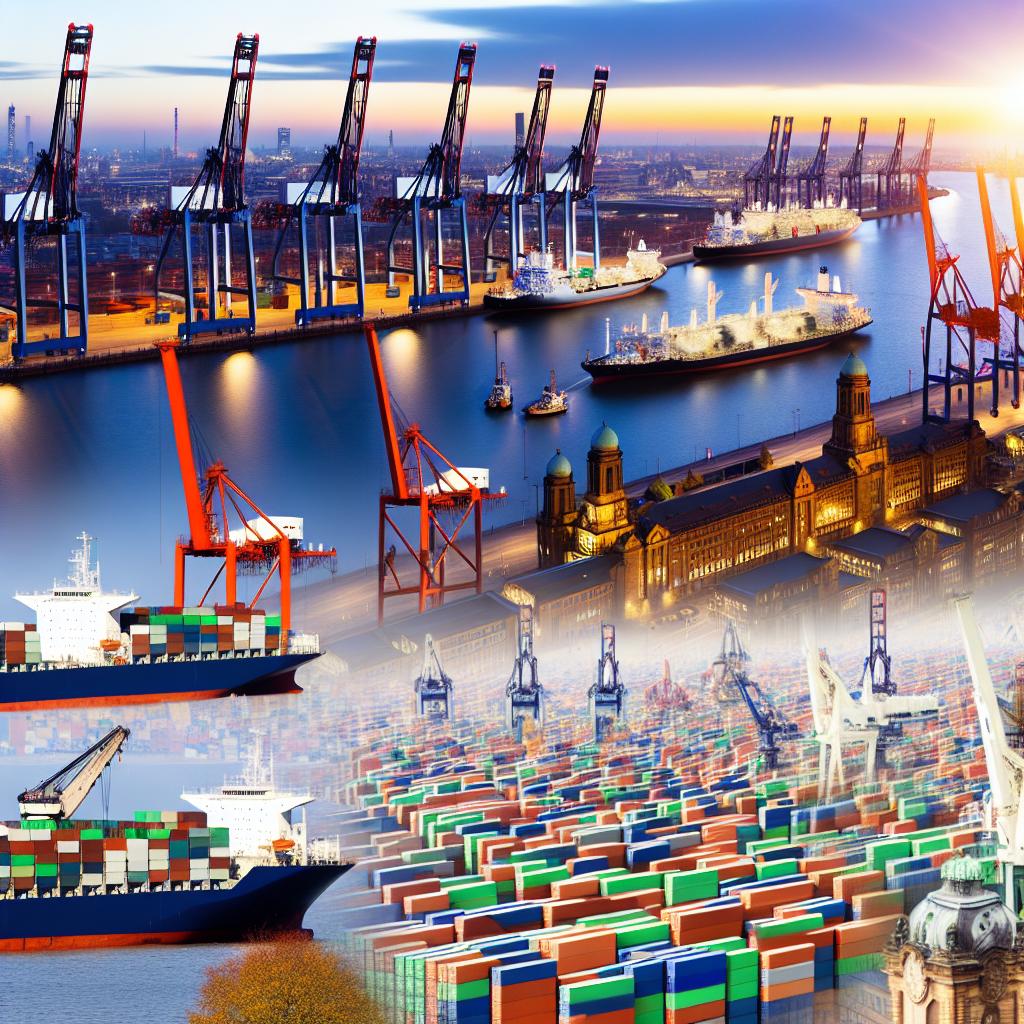The Strategic Importance of the Port of Rotterdam
Situated in the Netherlands, the Port of Rotterdam holds a pivotal role in European logistics due to its strategic location and advanced infrastructure. As one of the largest and busiest ports in the world, it serves as a vital gateway for goods entering and exiting Europe. The port is an integral part of the European logistics chain, significantly impacting trade, transport, and economic activities across the continent.
Geographical Advantage
The geographic location of the Port of Rotterdam provides it with a natural advantage in serving as a hub for European trade. This port is strategically located at the mouth of the Rhine River, one of Europe’s most important waterways. The Rhine serves as a major conduit for transporting goods into the European hinterland. As such, the Port of Rotterdam is able to facilitate efficient transportation of goods to and from key European markets in Germany, France, and other countries. The port’s proximity to these major economies ensures a continuous flow of trade, thus playing a monumental role in enhancing connectivity within Europe.
Advanced Infrastructure
The Port of Rotterdam is renowned for its state-of-the-art infrastructure, which supports a variety of logistics and supply chain operations. The port features world-class terminal facilities capable of handling a diverse range of cargo, including containers, bulk goods, and raw materials. Its infrastructure is designed to cater to different types of freight, from oil and coal to general merchandise, ensuring that the port can accommodate various industries. Furthermore, advanced IT systems optimize cargo handling, operational efficiency, and improve connectivity between different logistics modes, such as rail, road, and waterways. These technological advancements contribute to the port’s seamless operation and ability to manage an immense amount of cargo traffic.
Economic Impact
The economic impact of the Port of Rotterdam is extensive and transcends its immediate surroundings. By facilitating international trade, the port generates substantial revenue and is instrumental in creating jobs not only in the Netherlands but across Europe. It is estimated that the port supports thousands of jobs in diverse industries, ranging from shipping and logistics to manufacturing and services. The economic activities stimulated by the port contribute significantly to regional and national economies, reinforcing its importance as a key driver of economic growth. The interconnectedness of the port with global trade networks also enhances its economic influence, allowing Europe to maintain its competitive edge in international markets.
Sustainability and Innovation
In addition to economic considerations, the Port of Rotterdam is dedicated to sustainability and innovation. In recent years, there has been an increasing emphasis on reducing the environmental footprint of port operations. The port is investing in sustainable technologies and practices, striving to meet the demands for greener logistics solutions. Initiatives such as the development of green hydrogen facilities and the implementation of smart port concepts underscore the port’s commitment to sustainability. These developments not only reduce environmental impact but also position the port as a leader in pioneering innovative solutions to contemporary challenges in the logistics sector.
In conclusion, the strategic significance of the Port of Rotterdam is underscored by its geographic location, advanced infrastructure, and economic contributions to the European region. Furthermore, its initiatives towards sustainability and innovation firmly establish the port as a cornerstone of European logistics, ensuring that it keeps pace with emerging trends and challenges in the industry. The Port of Rotterdam’s continuous evolution will undoubtedly secure its role as a pivotal player across the logistics landscape of Europe for many years to come.
Historical Context and Development
The Port of Rotterdam’s significance is also rooted in its rich history of development and growth over the years. Originally established in the 14th century, the port has evolved from a modest trading post into a global trade focal point. The development of the port was particularly accelerated in the 19th century during the industrial revolution, where demands for coal and steel saw a significant increase in port activity. Subsequent expansions in the 20th century saw the introduction of oil refineries and the establishment of advanced industrial areas, which further elevated the port’s capacity and global standing.
Port Functionality and Operational Capacity
The operational capacity of the Port of Rotterdam is among the highest in the world. This capacity is supported by over 42 kilometers of quays and approximately 12,500 hectares of port and industrial area. The facilities within the port are capable of accommodating some of the world’s largest container ships, heavy lift vessels, and oil tankers. These metal giants arrive with goods ranging from consumer products to raw materials necessary for production in industries across Europe. The port’s extensive container handling capabilities, facilitated by large-scale cranes and automated systems, ensure efficient loading and unloading processes that are fundamental to maintaining global supply chain continuity.
Intermodal Connectivity
A cornerstone of the Port of Rotterdam’s logistics prowess is its exceptional intermodal connectivity. This involves seamless integration of different modes of transport, including maritime, rail, road, and inland waterways. The port’s intermodal systems allow for swift and efficient transfer of goods from ships to trains and trucks, facilitating efficient distribution networks throughout Europe. This helps in minimizing transit times and optimizing distribution channels, thus delivering economic efficiencies for businesses relying on the port for imports and exports. The port’s intermodal services are supported by extensive railway networks and highway systems that connect Rotterdam with major European cities and industrial centers.
Future Outlook and Strategic Initiatives
Looking to the future, the Port of Rotterdam continues to invest in strategic initiatives designed to maintain and strengthen its role as a leader in international logistics. Part of this strategic focus includes digital transformation efforts aimed at fostering a new era of port operations efficiency. Initiatives such as implementing blockchain-based systems for secure and transparent transactions and adopting augmented reality technologies for enhanced operational oversight position the port at the cutting edge of innovation in port management.
Moreover, sustainability remains at the heart of the port’s strategic outlook. Renewed emphasis on developing and utilizing sustainable energy sources, such as wind, solar, and tidal systems, reflects the port’s commitment to a greener operational model. These sustainability efforts are complemented by the promotion of circular economy principles, ensuring that waste and emissions are minimized while maximizing resource efficiency.
In summary, the Port of Rotterdam stands out as an exemplar of modern port management, contributing deeply to regional and global trade and economics. Its robust infrastructure, extensive connectivity, and forward-thinking approaches continue to uphold its status as a pivotal logistics hub. As it continues to adapt and innovate, the Port of Rotterdam remains solidly positioned to influence the future landscape of European logistics and international trade.
